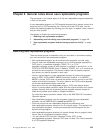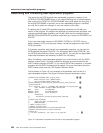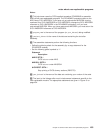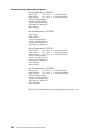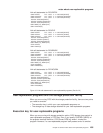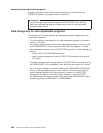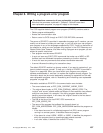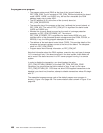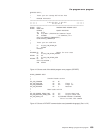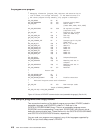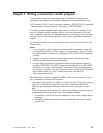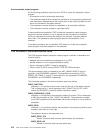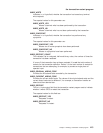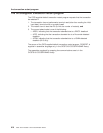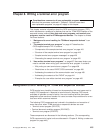v The program status word (PSW) at the time of the (current) abend, at
PEP_COM_PSW. The full contents of PEP_COM_PSW are significant for abend
codes ‘ASRA’, ‘ASRB’, and ‘ASRD’ only; the last four characters (the PSW
address) apply also to code ‘AICA’.
v The GP registers (0-15) at the time of the (current) abend, at
PEP_COM_REGISTERS.
v The execution key of the program at the time it suffered the (current) abend, at
PEP_COM_KEY. The value of PEP_COM_KEY is significant for abend codes
‘ASRA’ and ‘ASRB’ only.
v Whether the (current) abend occurred as the result of a storage protection
exception, at PEP_COM_STORAGE_HIT. The value of
PEP_COM_STORAGE_HIT is significant for abend code ‘ASRA’ only, and
indicates which of the protected dynamic storage areas (the CDSA, ECDSA, or
ERDSA), if any, the failing program attempted to overwrite.
v The address of the task abend control block (TACB). This provides details of the
subspace and access registers current at the time of the abend. The subspace
value is in PEP_COM_SPACE.
v Program status word interrupt information, at PEP_COM_INT.
Note that information about the PSW, registers, execution key, and type of storage
“hit” is meaningful only if the abend occurred in the local system; these fields are
set to zeros if the abend occurred in a DPL server program running in a remote
system.
In order to disable the transaction, you should assign the value
‘PEP_COM_RETURN_DISABLE’ to the field PEP_COM_RETURN_CODE.
Otherwise, you should allow the field to default to zero, or set it to the value
‘PEP_COM_RETURN_OK’. CICS does not allow CICS-supplied transactions to be
disabled; you should not, therefore, attempt to disable transactions whose IDs begin
with “C”.
The assembler-language source code of the default program error program is
shown in Figure 14 on page 409. The communication area is shown in Figure 15 on
page 409.
the program error program
408
CICS TS for OS/390: CICS Customization Guide




